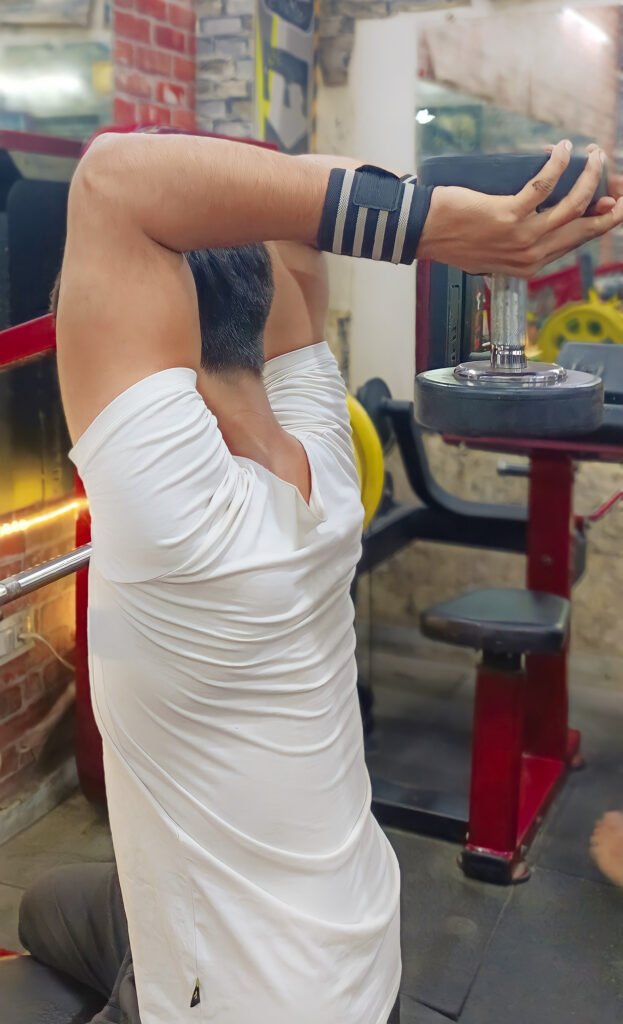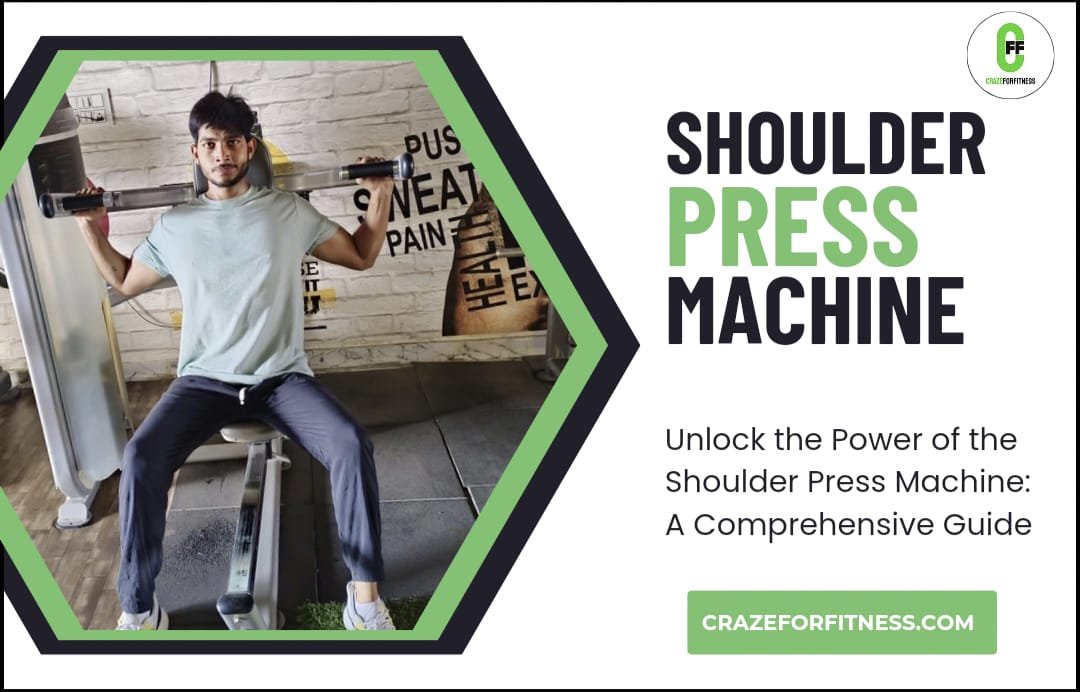Introduction:
In the vast realm of strength training and muscle development, the overhead dumbbell extension stands out as a highly effective exercise for targeting the triceps. Whether you’re a seasoned gym-goer or a fitness enthusiast looking to enhance your arm strength and definition, mastering the overhead dumbbell extension can be a game-changer. This comprehensive guide will take you through the ins and outs of this powerful exercise, covering proper form, benefits, variations, and safety considerations.
Understanding the Overhead Dumbbell Extension:
Targeted Muscles:
The overhead dumbbell extension primarily engages the triceps brachii, the three-headed muscle on the back of your upper arm. This isolation exercise allows for concentrated triceps activation, promoting muscle growth and strength.
Equipment Needed:
To perform the overhead dumbbell extension, you’ll need a flat bench and a pair of dumbbells. Choose a weight that challenges your muscles without compromising your form.
Overhead Dumbbell Extensions – A Guide to Proper Form
1. Starting Position:
a. Seated or Standing:

Whether seated or standing, ensure a stable and balanced position.
In a seated position, sit with your back straight and feet flat on the ground.
b. Core Engagement:
Tighten your core to stabilize your spine and maintain proper posture.
c. Grip:
Grasp a dumbbell in each hand using a neutral grip, with palms turned inward toward each other.
2. Lifting the Dumbbells:
a. Full Extension:
Start with the dumbbells directly above your head, arms fully extended.
Elbows should be close to your ears, forming a straight line from your wrists to your elbows.
b. Controlled Movement:
Lift the dumbbells smoothly, avoiding sudden or jerky movements.
Engage your triceps from the beginning of the lift.
3. Executing the Extension:
a. Elbow Movement:
Lower the dumbbells behind your head by bending at the elbows.
Maintain the position of your upper arms without any movement during the exercise.
b. Range of Motion:
Lower the dumbbells until your forearms are parallel to the ground or as far as your flexibility allows.
Avoid excessive extension, which may strain the elbow joints.
4. Return to Starting Position:
a. Controlled Ascent:
Straighten your elbows to return the dumbbells to the initial position.
Focus on the triceps doing the work rather than using momentum.
b. Breath Control:
Inhale during the lowering phase and exhale during the lifting phase to maintain proper breathing patterns.
5. Common Mistakes to Avoid:
a. Arching the Back:
Keep your back straight and avoid arching, especially in the seated position.
b. Flaring Elbows:
Ensure that your elbows remain close to your ears throughout the movement to target the triceps effectively.
c. Using Excessive Weight:
Select a weight that provides a challenge to your triceps while allowing you to maintain proper form.
Employing weights that are too heavy may result in compromised form, elevating the risk of injury.

Benefits of Overhead Dumbbell Extensions:
1. Triceps Isolation:
The primary focus of overhead dumbbell extensions is the triceps brachii, the often-neglected muscle group on the back of the arms. This isolation allows for concentrated stress on the triceps, fostering optimal muscle engagement and growth. As a result, practitioners experience enhanced definition and strength in this crucial area.
2. Muscle Development:
Overhead dumbbell extensions are renowned for their efficacy in promoting muscle hypertrophy. By subjecting the triceps to a challenging load, the exercise stimulates the growth of muscle fibers, contributing to both size and strength gains. Consistent incorporation of this exercise into your routine can lead to impressive improvements in overall arm aesthetics.
3. Versatility in Training:
One of the key advantages of overhead dumbbell extensions lies in their versatility. Whether you’re pursuing a strength-focused regimen, aiming for hypertrophy, or focusing on muscular endurance, this exercise seamlessly integrates into various training programs. It serves as a valuable tool for individuals with diverse fitness goals.
4. Improved Lockout Strength:
The locking out phase of the overhead dumbbell extension involves fully extending the elbows, requiring a robust display of strength. Regular inclusion of this exercise contributes to improved lockout strength, which can benefit other compound movements such as bench presses and overhead presses. This, in turn, enhances overall upper body strength and performance.
5. Joint Health and Flexibility:
Performing overhead dumbbell extensions involves a wide range of motion at the elbow and shoulder joints. Over time, this can lead to increased joint flexibility and improved mobility. However, it is essential to execute the exercise with proper form to ensure these benefits without risking injury.
6. Caloric Expenditure:
As a compound movement, overhead dumbbell extensions engage multiple muscle groups simultaneously. This leads to a higher caloric expenditure compared to isolation exercises, making it a valuable addition to fat loss or maintenance programs. The increased demand on the muscles also elevates the post-exercise calorie burn, contributing to overall metabolic health.
7. Variations for Specific Goals:
Whether seated or standing, using dumbbells or an EZ-bar, the versatility of overhead dumbbell extensions allows for tailored variations based on individual preferences and goals. These variations ensure that the exercise can be adapted to suit different fitness levels and accommodate any physical limitations.
Exploring 5 Variations of Overhead Dumbbell Extensions
1. Seated Overhead Dumbbell Extensions:
Execution:
Position yourself on a level bench, holding a dumbbell in each hand.
Maintain a straight back and ensure your feet are securely grounded.
Perform the extension as you would in the standard version.
Benefits:
Seated extensions offer increased stability, allowing for a strict focus on triceps engagement.
Reduces the likelihood of using body momentum, promoting better form.
2. Standing Overhead Dumbbell Extensions:
Execution:
Place your feet at shoulder-width distance, holding dumbbells in each hand.
Maintain a tight core and perform the extension as in the standard variation.
Benefits:
Engages the core and stabilizing muscles, adding a balance challenge.
Mimics real-life movements and can contribute to overall functional strength.
3. One-Arm Overhead Dumbbell Extensions:
Execution:
Hold a dumbbell in one hand, extending it overhead.
Keep the opposite hand on your hip or at your side.
Lower and lift the dumbbell using only one arm.
Benefits:
Addresses muscle imbalances by focusing on each arm individually.
Enhances stability and control as each arm works independently.
4. Overhead Dumbbell Extension with Rotation:
Execution:
Hold a dumbbell in both hands, palms facing each other.
As you extend the dumbbell overhead, rotate your wrists outward.
Return to the starting position and repeat.
Benefits:
Targets the triceps from different angles, enhancing overall muscle activation.
Incorporates forearm rotation, engaging additional muscles.
5. Overhead Dumbbell Extensions with an EZ-Bar:
Execution:
Use an EZ-bar instead of individual dumbbells.
Hold the EZ-bar with an overhand grip, hands shoulder-width apart.
Extend the bar overhead, maintaining a tight grip.
Benefits:
Alters the grip and wrist position, potentially reducing strain on the wrists.
Provides a different feel to the exercise, offering variety in training stimulus.
Safety Considerations:
Proper Warm-Up: Warm up your triceps and shoulders before starting the exercise to prevent injuries.
Appropriate Weight: Choose a weight that challenges you but allows for controlled and proper form.
Mindful Range of Motion: Pay attention to your body’s range of motion, avoiding excessive extension that may lead to strain or injury.
Breathing: Inhale during the lowering phase and exhale during the lifting phase to maintain proper breathing patterns.
Conclusion:
Incorporating the overhead dumbbell extension into your fitness routine can yield impressive results in triceps strength and definition. By mastering the proper form, understanding the benefits, exploring variations, and prioritizing safety, you can harness the full potential of this dynamic exercise. So, grab those dumbbells, find your bench, and elevate your triceps training with the ultimate guide to overhead dumbbell extensions.










